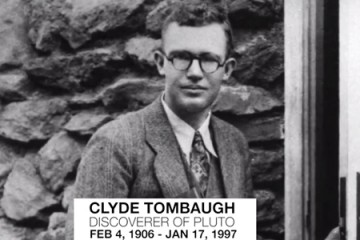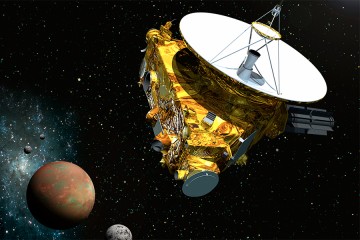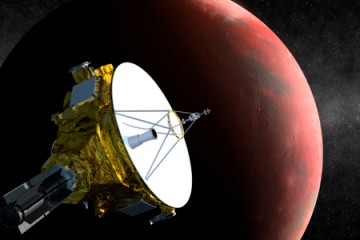Pluto discoverer Clyde Tombaugh could only dream of a spacecraft flying past the small planet he spotted on the edges of the solar system in 1930. Yet the newest views of Pluto from NASA's approaching New Horizons probe—released Wednesday, on the late American astronomer's birthday—hint at just how close that dream is to coming true.
Tombaugh, who died in 1997, was born on Feb. 4, 1906.
"This is our birthday tribute to Professor Tombaugh and the Tombaugh family, in honor of his discovery and life achievements—which truly became a harbinger of 21st century planetary astronomy," said Alan Stern, New Horizons principal investigator from the Southwest Research Institute in Boulder, Colorado. "These images of Pluto, clearly brighter and closer than those New Horizons took last July from twice as far away, represent our first steps at turning the pinpoint of light Clyde saw in the telescopes at Lowell Observatory 85 years ago into a planet before the eyes of the world this summer."
The new images, taken with New Horizons' telescopic Long-Range Reconnaissance Imager (LORRI) on Jan. 25 and Jan. 27, were the first acquired during the spacecraft's 2015 approach to the Pluto system, which is expected to culminate with a close flyby of Pluto and its system of moons on July 14. New Horizons was more than 126 million miles away from Pluto when it began taking the photos, which show Pluto and its largest moon, Charon.
"Pluto is finally becoming more than just a pinpoint of light," said Hal Weaver, New Horizons project scientist at the Johns Hopkins University Applied Physics Laboratory in Laurel, Maryland. "LORRI has now resolved Pluto, and the dwarf planet will continue to grow larger and larger in the images as New Horizons spacecraft hurtles toward its targets. The new LORRI images also demonstrate that the camera's performance is unchanged since it was launched more than nine years ago."
Over the next few months, the LORRI device will take hundreds of pictures of Pluto against star fields to refine the team's estimates of New Horizons' distance to Pluto. As in these first images, the Pluto system will resemble little more than bright dots in the camera's view until late spring, but mission navigators will use these images to design course-correcting engine maneuvers that precisely aim New Horizons on approach. The first such maneuver based on these "optical navigation" images is scheduled for March 10.
New Horizons, which is closing in on Pluto at about 31,000 miles per hour, has already covered more than 3 billion miles since its launch on Jan. 19, 2006. Its epic journey has taken it past each planet's orbit, from Mars to Neptune, in record time, and it is now in the first stage of an encounter with Pluto that will include long-distance imaging as well as dust, energetic particle, and solar wind measurements to characterize the space environment near the solar system's most distant planet.
"My dad would be thrilled with New Horizons," said Annette Tombaugh, Clyde Tombaugh's daughter, of Las Cruces, New Mexico. "To actually see the planet that he had discovered and find out more about it, to get to see the moons of Pluto ... he would have been astounded. I'm sure it would have meant so much to him if he were still alive today."
Posted in Science+Technology
Tagged applied physics laboratory, space, new horizons











